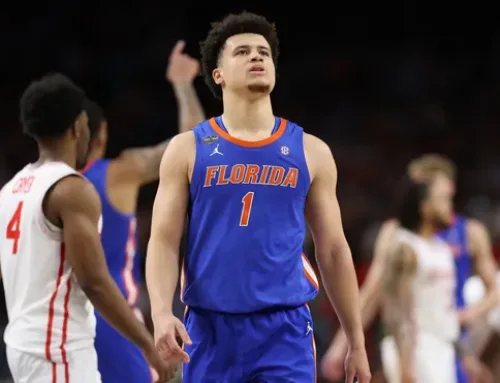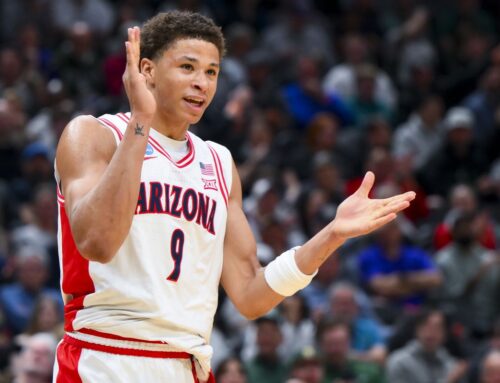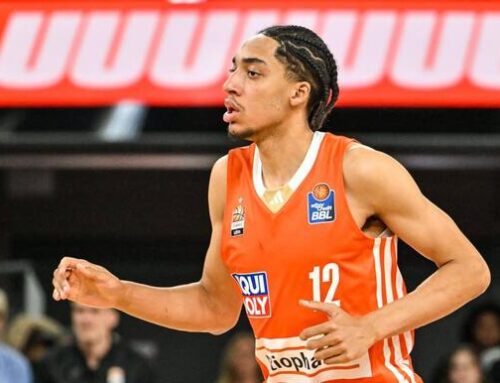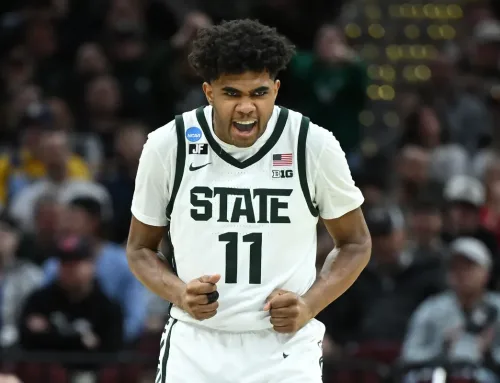By Avi Tyagi
2024 Ace Bailey ruined 2025 Ace Bailey’s statistical profile. 2024 Ace Bailey, against easier competition, didn’t meet a shot he didn’t like. Ace Bailey, in his first 11 games, compiled 27 turnovers to only 8 assists. Yuck! Even for a player whom I have major concerns about in terms of feel, that’s next-level atrocious. 2025 Ace had 30 assists to 34 turnovers and started to actually look for teammates more frequently. He’s not a great passer by any means, but he actually started to look for immediate interior passes within his sight line, rather than gluing his focus simply to his defender and the rim. Watching Ace play can alternate between mixtape shotmaking and baffling errors. Offensively, he’s an iso practitioner who prefers to clear out his side and attack from the triple threat with jabs, face-up jumpers, pull-ups, and rocker steps. Ace loves turnarounds and fade-aways, to a degree he absolutely shouldn’t. He’s a freshman, clearly growing into his body, with spindly legs that harken back to Bol Bol. It’s not a shocker that such a tall player with a play style predicated on perimeter scoring would thus struggle to get to the line and to create shots at the rim. It’s part of why Ace has become such a fascinating and polarizing draft prospect. Analysts who highly value flashes of brilliance will point to his ability to break down a single defender with either hand and set up a pull-up jumper with ease. It’s easy to compare him to past highly drafted wings like Brandon Ingram and Andrew Wiggins for charitable comparisons. On the other hand, Wiggins was a clearer plus-athlete at that age and could absorb and deliver contact more easily. Ingram was craftier with the handle and therefore had more consistent avenues to the rim. It’s not a shocker that Ingram had almost 50% self-created rim attempts per game than Ace did. While Ace can create with either hand, he’s also very clearly right-hand dominant, and his handle isn’t tight enough that teams would feel the need to back off. Ace also struggles to play in traffic. He won’t anticipate an incoming help defender and will chuck some true no-hopers. Watching Ace’s teammates when he has the ball in hand is fascinating. By the midpoint of the season, if Ace has the ball, teammates had mostly stopped cutting or moving, anticipating that Bailey would take the shot regardless. Towards the end of the season, perhaps driven by coaching emphasis, players were cutting more frequently rather than standing resigned on the court, and Ace found them more often.
Defensively, Ace will be just fine. He’s not exceptional on that end in space or when communicating help-side. He’ll commit some freshman fouls, but vertically brings enough as a shot blocker too. I wouldn’t say he defends offensive players that tightly, and he’s not a plus in the passing lanes. I think he’ll be semi-switchable and a good defender at the 3 a few years into his career.
Spending a top-5 pick on Ace is a difficult proposition in my eyes. What value does an iso middy player who’s likely to never be trusted with consistent touches have in today’s game? Do you end up in a Kuminga predicament, caught between the bench and ambitions of being a starter? Kuminga had different strengths but a similar set of weaknesses and hasn’t evolved to anything near a star level player yet. And of the two, JK displayed better vision as a prospect. I don’t mean to subject the audience to anchoring bias by bringing up all these similar names, but it’s difficult to ignore how many highly drafted players with similar vision and read-making weaknesses have found difficulty in improving those minutes today. Cam Whitmore would have been higher on my draft board if these two were in the same class and Whitmore was the most notable draft faller in his class, getting picked at 20 and barely factoring thus far in Houston. At a certain point, the shotmaking upside is too valuable and the Ingram-esque potential will drive the stock forward. For me, that would be in the back half of the top 10.





